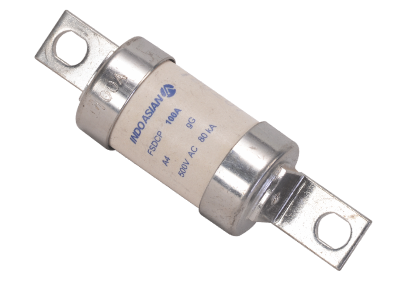HRC Fuse: Types, Construction, Function And Benefits
A fuse is a short length of wire with two terminals installed on an insulating base and wired in series with an electric circuit. A fuse is the simplest way to safeguard equipment from damage caused by overload or short circuit failures in medium and low-voltage applications.
A high rupturing capacity fuse (HRC fuse) is the complete form of this acronym. Protection for electric motors and distribution systems can be counted on for precision and reliability.
HRC Fuse: What Is It?
Short for “high rupturing capacity cartridge fuse” or “HRC fuse,” this type is a safety fuse. A high rupturing capacity fuse link can carry a short circuit current up to its rated capacity before rupturing.
If the threshold is exceeded, the connecting link will break, cutting power to the malfunctioning device. A high-resistance circuit breaker, or HRC fuse, is typically used to safeguard electrical distribution systems and motors.
Functional Theory Of The Hrc Fuse
When running at its regular rated current, the HRC fuse link doesn’t make enough heat to melt the fuse element. As a result of a short circuit or fault, a strong fault current flows through the fuse link, melting it before it reaches its peak.
When an element melts, its vapours disperse, and an arc forms due to the chemical interaction between the steam and powdered quartz. This arc is quenched by the high-resistance substance formed, and the fault current is interrupted.
Different Types Of Hrc Fuse:
● NH Type
The NH-type HRC fuse is commonly used in medium and low-voltage settings. This fuse type protects against overload and short circuits, and the motor is safe from damage caused by an overload or short circuit.
● DIN Type HRC Fuse
There is a selection of current ratings for DIN-type HRC fuses. They are chosen for their properties and operating temperatures. DIN fuses are used in gas-tight switchgear and transformer enclosures, and DIN fuses are used in gas-tight switchgear and transformer enclosures.
● Blade Type
It’s worth noting that blade fuses are interchangeably referred to as Plug I fuses. Typically, fuses have a plastic housing with two metal terminal covers.
These fuses come in a variety of sizes and current capacities. These fuses are secondary safeguards against the motor, wiring, and short circuit failure in automotive settings.
The Benefits of HRC Fuse
The benefits of using HRC fuse are as follows:
- Capable of clearing high-fault-current flows
- Maintains its quality over time.
- Requires zero upkeep
- Stability in output
- HRC fuse is cheaper than other circuit breakers
Application
Below are some ways that high-rupturing-capacity fuses can be used.
- Protection of the low-voltage distribution system
- Motor protection
- Bus bar protection
- Protection for semiconductor devices
- Use as a backup for the circuit breaker’s protection.
Conclusion
HRC fuses are purpose-built for the protection of circuits in certain circumstances. An HRC fuse’s primary function is to safely interrupt an over-current in an electrical circuit, which can be significantly larger than the circuit’s usual operating current. You can surely get one from IndoAsian!



